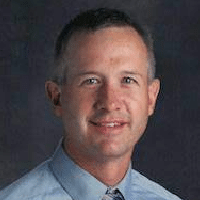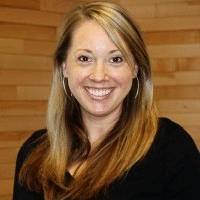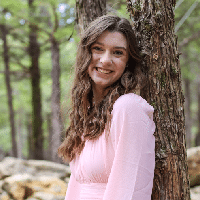Student-Driven Innovation Fuels Inclusivity for All Students
Basehor-Linwood High School’s Innovation Academy is using student-driven innovation curricula to solve real-world problems in the school and its wider community, which allows all students the opportunity to develop crucial leadership and critical thinking skills in the process. This case study takes a closer look at some of these projects and explores how they are making an impact for diverse students.
When Joely Hackmann began reviewing her scheduling sheet for her ninth grade year at Basehor-Linwood High School — a school of about 900 students that lies just west of Kansas City, Kansas — she saw familiar subjects that greet freshmen all over the country, including social studies, English Language Arts, and math. But one option in particular stood out: Innovation Academy. With no prerequisite attached, she selected it and over the course of the next year she and a cohort of other ninth graders undertook a comprehensive, real-world learning project to design a local park. The course built and strengthened their project management, landscape design, and community engagement skills, and in turn fueled Hackmann’s passion for hands-on learning.
Basehor-Linwood’s Innovation Academy was launched to fill the critical gaps that a traditional curriculum often fails to address, and it leads students to unlock leadership, communication, and critical thinking skills in the process. Crucially, Innovation Academy was open to all students to participate. While many project-based learning curricula are only open to students on enrichment or advanced studies tracks, Innovation Academy was designed from the outset to be an inclusive core course that provides different learning paths for diverse students. The cross-curricular course allows any student to complete a year- or semester-long, hands-on learning project that directly addresses real-world issues that require innovative solutions. Developing real-world competencies and teaching design thinking processes are pillars of the program. According to Jayme Breault, Real World Learning and Innovation Specialist at Basehor-Linwood High School, embracing the unknown and knowing it’s okay to fail are two other important pieces of the Innovation Academy curriculum — and those two are often the real-world skills that students are most hesitant to embrace at first. The faculty and staff at Basehor-Linwood recognized early on that these skills are needed for all students, not just a select few.
Initially launched for upperclassmen at the junior and senior levels, Innovation Academy was recently expanded as a course open to all class levels, without restriction to specific groups of students that are often singled out for enrichment programs. Breault says this was especially important to the school when launching the program. “We’re able to reach all kids,” she explains, “and we could specifically reach the ones that were really quiet, low-flying… the ‘I don’t want you to notice me’ kids. They’re the ones that come to school quiet, often with average grades, but to see what they are capable of in Innovation Academy when encouraged, or given the attention, or these options — they thrive.”
Throughout her ninth grade year, Hackmann worked with her fellow Innovation Academy classmates to start the design and implementation process for a local community park. This included consistent communication and collaboration with local community members and stakeholders, including city officials, but she noted that some of their most important interviews were with a more unsuspecting group: local elementary school students.
“We wanted to be able to design a park for the community that had broad appeal,” said Hackmann. “The main part of the park was designed with younger kids in mind, but we also included spaces for all ages like park benches and a place to take prom photos, so everyone in the community could use it.” One of Hackmann’s biggest takeaways was how useful and important collaboration was for the design process, and how often her team needed to revise their design plans after input and feedback from others. The “it’s okay to fail” piece was not only encouraged by her teacher, but it was necessary for the project to be a success. As someone who used to “dread group projects,” Hackmann said that collaboration piece surprised her the most about Innovation Academy: “Working with other people made me consider different points of view and perspectives that I hadn’t considered before and showed me the importance of compromise to make sure that the final design product worked well for everyone. It was a long process, but really worthwhile to see the end product.”
The Innovation Academy model champions flexible learning environments and schedules, while also aligning with Common Core standards, so that students do not miss the markers of traditional preparation for post-secondary success. “[Students] have the ability to really drive their own learning… and get excited to learn and be at the center of that learning without taking out a lot of the traditions of education that still have important values,” Jared Jackson, Director of Innovative Programs and Assistant Principal at Basehor-Linwood High School, explains. This is significant, he stresses, to provide students with real-world experience of how to thrive in college and careers after high school. “The point is providing options,” he says. “We run Innovation Academy parallel to [traditional curriculum] so students may still need to listen to lectures or absorb content in a way that is still common in post-secondary environments like college or corporate training.” By aligning the assessment to common core standards, Innovation Academy can remain open to students at all learning levels.
Prisha Patel, a sophomore at Basehor-Linwood High School, knew from the beginning of her high school career that Innovation Academy was a perfect fit for the budding entrepreneur. Deeply interested in healthcare careers, her 10th grade Innovation Academy project involved setting up a peer-mentoring program, the first for the school, specifically because of her long-term interest in medicine. “It was the perfect project for me, because I am very interested in a career in the healthcare field and this allowed me to explore that on my own with the mentoring project,” she said.
Patel worked closely with one other student and their project outline followed much as a traditional non-profit health organization’s would. First, they devoted considerable time to applying to a local community grant to fund the project, and collaborated extensively with school staff to gain feedback about grant writing and the structure of the mentorship program itself. Delegating tasks between her and her partner, another common real-world obstacle, was Patel’s biggest hurdle: “Communication was always a struggle because we had different schedules and classes, and we tried different organization systems that I had to change over time to meet our needs. Eventually we figured out that delegating specific tasks worked best for us.”
From there, Patel and her partner created a timeline and established a training program to begin the mentorship program. Overall, she states that Innovation Academy has helped convince her that her healthcare pathway and entrepreneurship are important long-term pieces to her life and her learning process. “This was one of the most exciting and incredible things that I got to experience,” she states, “and we were both proud to be able to help bring some funding into something that will help generations of Basehor-Linwood High School students.”
For schools that are hoping to implement similar project-based learning into their curriculum, Jackson and Breault stressed the importance of options for both faculty and students. Real-world learning can promote student autonomy and lead to self-guided learning in practical spaces, but it does not have to exist separately from traditional, common-core aligned instruction. As a result, Innovation Academy stands as an inclusive practice that encourages all students, not just a select few, to step outside the confines of traditional education and practice real world learning skills to shape their future. “The only silver bullet in education may be to provide options. Project-based learning may not work for every kid, but it can be transformative,” Jackson stressed.
Reflections
Big takeaway:
Giving students the power to direct their own learning can open pathways to develop real-world leadership and critical thinking skills that teach them about the importance of collaboration, design thinking, and project management.
What we are still figuring out:
Long-term scalability to keep initiatives like Innovation Academy funded as a critical part of our school’s curriculum.
What I would tell other educators/students:
Options are critical to providing a robust education that can serve all students, not just select groups or students. Large-scale programs like Innovation Academy aren’t required to allow project-based learning alongside a traditional curriculum — offering options for demonstrating course content in innovative ways can happen even on smaller scales.
About The Author
Jared Jackson
Assistant Principal and Director of Innovative Programs
Basehor-Linwood High School

Jayme Breault
Real World Learning and Innovation Specialist
Basehor-Linwood High School

Joely Hackmann
Class of 2025
Basehor-Linwood High School

Prisha Patel
Class of 2024
Basehor-Linwood High School
